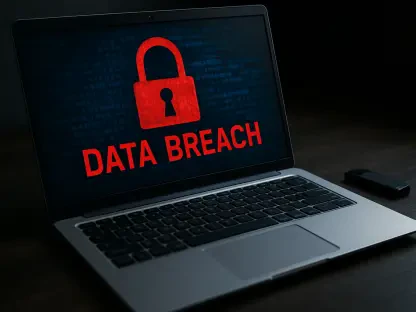Setting the Stage for Vault Security Concerns
Imagine a scenario where the digital fortresses safeguarding an enterprise’s most sensitive secrets—passwords, tokens, and encryption keys—are breached without a single credential being stolen, revealing a chilling vulnerability in systems trusted by countless organizations. This alarming possibility became a reality with the discovery of over a dozen critical vulnerabilities in CyberArk and HashiCorp Vault systems, collectively dubbed Vault Fault. These flaws, affecting widely used secure vault solutions, have sent shockwaves through the cybersecurity community, raising urgent questions about the integrity of enterprise identity management.
The significance of secure vaults cannot be overstated in today’s threat landscape, where data breaches can cripple organizations financially and reputationally. With industries like finance, healthcare, and technology relying on these systems to protect critical assets, the exposure of such vulnerabilities underscores a pressing need to reassess how security is implemented at the core of digital infrastructure. This review delves into the technical intricacies of these flaws and their broader implications.
In-Depth Analysis of Vault Security Features and Flaws
CyberArk Secrets Manager and Conjur Vulnerabilities
CyberArk’s offerings, including Secrets Manager, Self-Hosted, and Conjur Open Source, were found to harbor severe vulnerabilities that could dismantle security barriers. Specific flaws, such as authentication bypass issues (CVE-2025-49827 and CVE-2025-49831, both with CVSS scores of 9.1) and remote code execution (CVE-2025-49828, CVSS score 8.6), enable attackers to gain unauthorized access and execute arbitrary commands. These high-severity issues pose a direct threat to the confidentiality and integrity of stored secrets.
The attack chain in CyberArk systems reveals a sophisticated exploitation path. Attackers can forge valid-looking responses to bypass IAM authentication, authenticate as policy resources, and abuse the Host Factory endpoint to create malicious hosts with embedded payloads. Triggering these payloads via the Policy Factory endpoint allows full remote code execution without ever presenting valid credentials, highlighting a critical lapse in authentication mechanisms.
Beyond the technical details, the impact of these flaws is profound for enterprises trusting CyberArk to secure their digital assets. Unauthenticated access to sensitive data could lead to catastrophic breaches, emphasizing the urgency of applying patches and reevaluating security configurations to prevent such scenarios from unfolding in real-world environments.
HashiCorp Vault Critical Weaknesses
HashiCorp Vault, another cornerstone of enterprise secrets management, was not immune to critical vulnerabilities. Flaws such as arbitrary remote code execution (CVE-2025-6000, CVSS score 9.1), privilege escalation (CVE-2025-5999, CVSS score 7.2), and certificate entity impersonation (CVE-2025-6037) expose significant risks. Some of these issues, dating back several years, indicate long-standing gaps in security design that attackers could exploit for persistent access.
Additional weaknesses in HashiCorp Vault’s lockout protection logic and MFA configurations amplify the threat. Attackers can exploit timing-based side channels to infer valid usernames or bypass multi-factor authentication in LDAP setups, undermining core security controls. Such flaws could be weaponized to create stealthy communication channels or even transform security features into ransomware vectors by deleting critical unseal keys.
The persistence of these vulnerabilities over extended periods raises concerns about the effectiveness of existing testing and auditing processes. Enterprises relying on HashiCorp Vault must confront the reality that undetected flaws could have provided backdoors for threat actors, necessitating a thorough review of historical security postures alongside immediate remediation efforts.
Vendor Responses and Community Insights
Following responsible disclosure earlier this year, both CyberArk and HashiCorp moved swiftly to address the identified vulnerabilities. CyberArk released patches in versions 13.5.1, 13.6.1, and 1.22.1 for its affected products, while HashiCorp updated Vault Community and Enterprise editions to versions 1.20.2, 1.19.8, 1.18.13, and 1.16.24. These updates aim to close the exploited security gaps and restore trust in their platforms.
The cybersecurity community has responded with a mix of concern and constructive critique, with researchers like Yarden Porat shedding light on how logic bugs can subvert authentication and policy enforcement without triggering traditional exploit indicators. This perspective challenges conventional security paradigms, pushing for deeper scrutiny of non-memory-related vulnerabilities in critical systems.
Emerging trends in vault security research, spurred by these discoveries, suggest a shift toward more proactive enterprise strategies. Organizations are increasingly urged to integrate continuous monitoring and anomaly detection into their security frameworks, reflecting a broader recognition that static defenses alone are insufficient against evolving threats.
Real-World Implications Across Industries
The practical consequences of these vulnerabilities are far-reaching, particularly for sectors like finance, where secure vaults protect transactional data and customer information. A successful exploit could enable remote vault takeover, allowing attackers to extract sensitive tokens or encryption keys, potentially leading to massive financial losses or regulatory penalties for non-compliance.
In healthcare, where patient data privacy is paramount, the risks are equally dire. A breach facilitated by these flaws could expose personal health information, eroding public trust and disrupting critical services. Hypothetical scenarios, such as an attacker deploying ransomware via exploited vault features, illustrate the cascading effects on operational continuity and data integrity.
Technology firms, often at the forefront of innovation, also face unique challenges. Their reliance on vault systems for securing development pipelines and intellectual property means that unpatched vulnerabilities could compromise competitive advantages. These examples underline the urgent need for robust patch management and contingency planning to mitigate the fallout from potential exploits.
Challenges in Securing Vault Technologies
Securing vault systems against logic bugs and authentication bypasses presents distinct technical hurdles, as these issues do not stem from traditional exploit vectors like memory corruption. Detecting such flaws requires advanced testing methodologies that go beyond surface-level scans, focusing instead on the intricate interplay of authentication protocols and policy enforcement mechanisms.
Current security features, such as Control Groups and lockout mechanisms, have shown limitations in preventing sophisticated attacks. The difficulty in identifying long-standing vulnerabilities further complicates mitigation efforts, as historical flaws may have already been exploited without detection, leaving organizations vulnerable to undetected compromises.
Both CyberArk and HashiCorp are investing in strengthening their platforms, but balancing usability with stringent security remains a persistent challenge. Enterprises must navigate the tension between operational efficiency and robust protection, often requiring customized configurations and ongoing training to ensure that security measures are effectively implemented without hindering productivity.
Looking Ahead to Enhanced Vault Security
The future of secure vault technologies likely hinges on significant enhancements to authentication frameworks and policy enforcement strategies. Innovations such as adaptive authentication, which dynamically adjusts security requirements based on contextual risk factors, could offer a path forward in preventing bypass vulnerabilities from emerging in the first place.
Emerging cybersecurity practices, including zero-trust architectures, are poised to play a pivotal role in fortifying vault systems. By assuming no entity is inherently trusted, regardless of location or credentials, zero-trust principles can help mitigate the impact of privilege escalation and impersonation flaws, fostering a more resilient security posture across enterprise environments.
Over the long term, these findings may reshape trust in vault solutions, driving demand for stricter security standards and transparency in secrets management. As organizations from 2025 onward prioritize rigorous auditing and independent validation of security tools, the industry could see a cultural shift toward greater accountability and proactive defense mechanisms.
Reflecting on the Path Forward
Looking back, the discovery of the Vault Fault vulnerabilities in CyberArk and HashiCorp systems served as a stark reminder of the fragility inherent in even the most trusted security solutions. The severity of these flaws, coupled with their potential for remote exploitation, underscored the critical importance of timely updates and thorough security assessments.
Moving forward, enterprises need to adopt a multi-layered approach to secrets management, incorporating regular patch cycles, advanced monitoring tools, and zero-trust principles to safeguard against future threats. Collaboration between vendors, researchers, and organizations emerges as a vital step in identifying and addressing vulnerabilities before they can be exploited.
Ultimately, the journey toward robust vault security demands a commitment to continuous improvement and adaptability. By investing in emerging technologies and fostering a culture of vigilance, businesses can better position themselves to navigate the evolving cybersecurity landscape with confidence and resilience.









